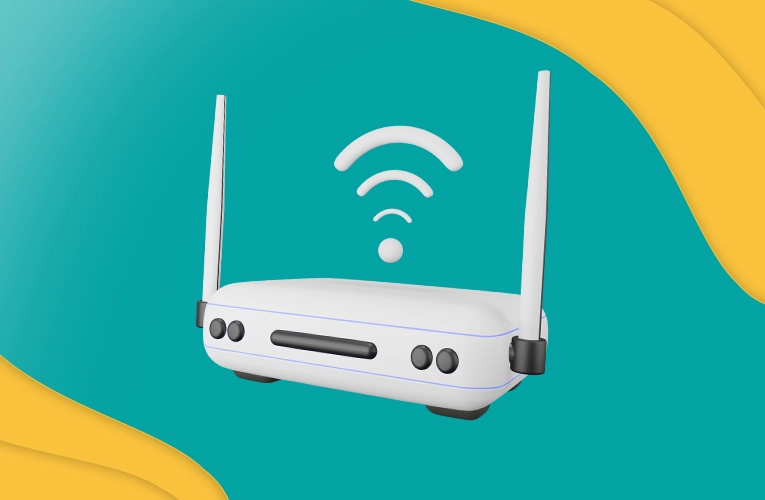How to Flash a Router
Flashing a router typically involves replacing its current firmware with custom firmware, such as DD-WRT or OpenWRT, to unlock additional features or improve performance. Here’s a general guide on how to flash a router:
- Research Compatible Firmware: Before flashing, ensure that your router model is compatible with the custom firmware you want to install. Visit the firmware’s website and find the appropriate version for your router.
- Download Firmware: Download the firmware file to your computer from the official website of the custom firmware you’ve chosen.
- Prepare Router: Connect your router to your computer using an Ethernet cable. Disable any wireless connections on your computer to prevent interruptions during the flashing process.
- Access Router Settings: Open a web browser and enter your router’s IP address in the address bar. This is typically something like “192.168.1.1” or “192.168.0.1”. Enter your router’s username and password to log in. If you haven’t changed these, the default username and password should be listed in your router’s manual. Read about What is SSH
- Backup Current Firmware (Optional): Some guides recommend backing up your router’s current firmware in case something goes wrong during the flashing process. This step is optional but recommended for added safety.

- Flash Firmware: Locate the firmware upgrade section in your router’s settings. This is usually found under “Administration” or “Firmware Upgrade”. Use the option to upload the custom firmware file you downloaded earlier.
- Wait for the Flashing Process: After uploading the firmware file, the flashing process will begin. This may take a few minutes. Do not interrupt the process or turn off your router during this time, as it could brick your device.
- Reset Router: Once the flashing process is complete, perform a factory reset on your router. This usually involves holding down the reset button for a certain amount of time (refer to your router’s manual for specific instructions). Discover about What are the Differences Between API And SDK
- Configure Custom Firmware: After the reset, log in to your router’s settings again. You should now see the custom firmware interface. Configure your settings according to your preferences.
- Test Router: Once configured, test your router to ensure everything is working properly. Check your internet connection, wireless networks, and any other features you’ve configured.
Remember that flashing your router with custom firmware carries some risks, including the potential to void your warranty or damage your device if done incorrectly. Make sure to follow instructions carefully and proceed at your own risk.
Understanding Router Firmware
Router firmware is the software that controls the basic functions of a router. It governs how data is transmitted between devices and manages network security protocols. There are various types of firmware available, including stock firmware provided by the manufacturer and third-party firmware developed by independent developers. Learn about How to Configure Docker to Use a Proxy
Benefits of Flashing a Router
Flashing a router offers several benefits. Firstly, it enhances security by providing access to advanced encryption protocols and security features. Additionally, it improves performance and stability, ensuring smoother data transmission and fewer connectivity issues. Moreover, flashing a router unlocks advanced customization options, allowing users to tailor their network settings to their specific needs.
Preparing for Router Flashing
Before flashing a router, it’s essential to prepare adequately. This includes researching compatible firmware for your router model, backing up your current router settings, and gathering the necessary equipment, such as a computer and an Ethernet cable.
Flashing Process Step-by-Step
The flashing process typically involves accessing the router’s settings through a web browser, uploading the new firmware file, and verifying successful flashing. It’s essential to follow the manufacturer’s instructions carefully and ensure a stable internet connection throughout the process.
Troubleshooting Common Issues
Despite careful preparation, users may encounter common issues during the flashing process, such as connection problems or firmware compatibility issues. In such cases, troubleshooting steps may include resetting the router to factory settings or seeking assistance from online forums or technical support.
Post-Flashing Configuration
After successfully flashing the router, users should configure their network preferences and security settings. This includes setting up Wi-Fi passwords, enabling firewall protection, and optimizing router performance for maximum efficiency.
Safety Precautions
It’s crucial to exercise caution when flashing a router to avoid potential risks. This includes following manufacturer instructions explicitly, avoiding power interruptions during the flashing process, and being aware of the potential consequences of incorrect flashing.

Regular Maintenance and Updates
Once the router is flashed, it’s essential to perform regular maintenance tasks and check for firmware updates regularly. This ensures continued security and optimal performance of the router over time.
Conclusion
In conclusion, flashing a router is a valuable process that unlocks advanced features and capabilities for improved networking performance and security. By following the steps outlined in this article and exercising caution throughout the process, users can enhance their network experience and enjoy the benefits of a customized and secure network environment.
FAQs
- Can flashing a router void its warranty?
- Generally, yes. It’s essential to check the manufacturer’s warranty policy before flashing a router.
- Is flashing a router legal?
- Yes, as long as you use authorized firmware and comply with applicable laws and regulations.
- Can I revert to the original firmware after flashing?
- In most cases, yes. Manufacturers usually provide instructions for reverting to the original firmware if needed.
- Will flashing a router improve its speed?
- While flashing can optimize performance, it may not necessarily increase internet speed.
- Is it necessary to flash a router for basic home use?
- No, flashing a router is optional and primarily beneficial for users who require advanced customization and security features.